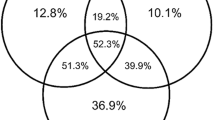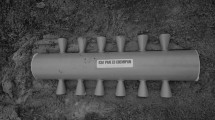Abstract
Boros schneideri is an endangered saproxylic beetle species in Europe, included in the list of species for which micro-reserves are established in Latvia. Micro-reserves for capercaillie lek areas are created in similar habitats in Latvia; therefore, these sites might be suitable for B. schneideri and play an important role in the protection of the species. This study aimed to identify ecological factors affecting the occurrence of B. schneideri and to estimate the species’ population density in Central Latvia. In total, six micro-reserves (primarily established to protect capercaillie lek areas) and six, randomly picked, control territories were examined, including 304 forest stands and 312 pine snags. In total, 109 B. schneideri specimens were found. The most important ecological factors for B. schneideri were the age of the forest stand, the presence of deadwood in different stages of decomposition, and the number of snags per forest stand. All mentioned factors are important structural elements of natural forests; hence, B. schneideri can be considered as an indicator species of natural forest habitats. The most important ecological factors for B. schneideri on a micro-habitat scale are the area and thickness of the remaining bark, presence of Ascomycota fungi mycelium on a trunk, and trunk’s circumference. We suggest that B. schneideri is a pioneer species since larger areas of bark, as well as Ascomycota fungi mycelium are more often found on recently dead trees.




Similar content being viewed by others
References
Alexander KNA (2008) Tree biology and saproxylic Coleoptera: issues of definitions and conservation language. https://documents.irevues.inist.fr/bitstream/handle/2042/55805/RevuedEcologie_2008_SUP10_9.pdf?sequence=1
Andersen J, Nilssen AC (1978) The food selection of Pytho depressus L. (Coleoptera, Pythidae). Nor J Entomol 25:225–226
Blažytė-Čereškienė L, Karalius V (2011) Habitat requirements of the endangered beetle Boros schneideri (Panzer, 1796) (Coleoptera: Boridae). Insect Conserv Divers 5:186–191
Bueno A, Diez JJ, Fernández MM (2010) Ophiostomatoid fungi transported by Ips sexdentatus (Coleoptera; Scolytidae) in Pinus pinaster in NW Spain. Silva Fenn 44:387–397
Cooke WB (1959) An ecological life history of Aureobasidium pullulans (De Bary) Arnaud. Mycopathol Mycol Appl 12:1–45
Ek T, Suško U, Auziņš R (2002) Mežaudžu atslēgas biotopu inventarizācija. Valsts meža dienests. Meža pārvalde, Östra Götaland, SWE, Rīga
EU directive (1992) The habitats directive 92/43/EEK. https://ec.europa.eu/environment/nature/legislation/habitatsdirective/index_en.htm. Accessed 21 May 1992
Gorton C, Webber JF (2000) Reevaluation of the status of the bluestain fungus and bark beetle associate Ophiostoma minus. Mycologia 92:1071–1079
Gutowski JM, Sucko K, Zub K, Bohdan A (2014) Habitat preferences of Boros schneideri (Coleoptera: Boridae) in the natural tree stands of the Białowieża Forest. J Insect Sci 14:276–281
Heliövaara K (2001) Metsiemme kovakuoriaisia. Valkeakoski, UPM-Kymmene Metsä, Helsinki
Horák J, Zaitsev AA, Vávrová E (2011) Ecological requirements of a rare saproxylic beetle Cucujus haematodes—the beetles’ stronghold on the edge of its distribution area. Insect Conserv Divers 4:81–88
Karalius V, Blažytė-Čereškienė L (2009) Distribution of Boros schneideri (Panzer, 1796) (Coleoptera, Boridae) in Lithuania. J Insect Conserv 13:347–353
Lārmanis V (2013) 9010* Veci vai dabiski boreāli meži. Eiropas savienības aizsargājamie biotopi Latvijā. Noteikšanas rokasgrāmata. 2. papildināts izdevums (red. Auniņš A.). Latvijas dabas fonds, Rīga, pp 257–274
Latvian Ministry of Agriculture (2016) Forest statistic CD. https://www.vmd.gov.lv/valsts-meza-dienests/statiskas-lapas/publikacijas-un-statistika/meza-statistikas-cd?nid=1809#jump. Accessed 23 Oct 2016
Martikainen P, Siitonen J, Punttila P, Kaila L, Rauh J (2000) Species richness of Coleoptera in mature managed and old-growth boreal forests in southern Finland. Biol Conserv 94:199–209
Müller J, Jarzabek-Müller A, Bussler H (2013) Some of the rarest European saproxylic beetles are common in the wilderness of Northern Mongolia. J Insect Conserv 17:989–1001
Ozols G (1985) Priedes un egles dendrofāgie kukaiņi Latvijas mežos. Zinātnes un ražošanas apvienība “Silava”, Rīga
Plewa R, Hilszczański J, Jaworski T, Sierpiński A (2014) Nowe i rzadko spotykane chrzàszcze (Coleoptera) saproksyliczne wschodniej Polski. Wiadomości Entomol 33:85–96
Polevoy AV, Humala AE (2014) Entomological studies on the Russian territory of the Green Belt of Fennoscandia. Works of Karelian Res Centre RAS 6:134–138
Prieditis N (2002) Evaluation frameworks and conservation system of Latvian forests. Biodivers Conserv 11:1361–1375
Romón P, Zhou X, Iturrondobeitia JC, Wingfield MJ, Goldarazena A (2007) Ophiostoma species (Ascomycetes: Ophiostomatales) associated with bark beetles (Coleoptera: Scolytinae) colonizing Pinus radiata in northern Spain. Can J Microbiol 53:756–767
Schiegg K (2000) Effects of deadwood volume and connectivity on saproxylic insect species diversity. Ecoscience 7(3):290–298
Siitonen J (2001) Forest management, coarse woody debris and saproxylic organisms: Fennoscandian boreal forests as an example. Ecol Bull 49:11–41
Stokland JN, Siitonen J, Jonsson BG (2013) Biodiversity in deadwood. Cambridge University Press, Cambridge
Telnov D, Fägerström Ch, Gailis J, Kalniņš M, Napolov A, Piterāns U, Vilks K (2006) Contributions to the knowledge of Latvian Coleoptera. 5. Latvijas Entomol 43:78–125
Valainis U, Barševskis A, Balalaikins M, Cibuļskis R, Avgin SS (2014) A review of Latvian saproxylic beetles from the European Red List. Acta Biol Univ Daugavp 14:217–227
Vilks K, Telnov D (2003) Notes on recent findings of Boros schneideri (Panzer, 1795) (Coleoptera, Boridae) in Latvia. Latvijas Entomol 40:63
Author information
Authors and Affiliations
Corresponding author
Ethics declarations
Conflict of interest
The authors declare that they have no conflict of interest.
Research involving animals
The authors declare that during this study, no beetles were killed.
Additional information
Publisher's Note
Springer Nature remains neutral with regard to jurisdictional claims in published maps and institutional affiliations.
Rights and permissions
About this article
Cite this article
Ozols, J., Ozola, M., Balalaikins, M. et al. Ecology and calculation of population density of the protected saproxylic beetle species Boros schneideri (Panzer, 1796) (Coleoptera, Boridae) in capercaillie lek areas. J Insect Conserv 24, 399–407 (2020). https://doi.org/10.1007/s10841-020-00239-x
Received:
Accepted:
Published:
Issue Date:
DOI: https://doi.org/10.1007/s10841-020-00239-x




